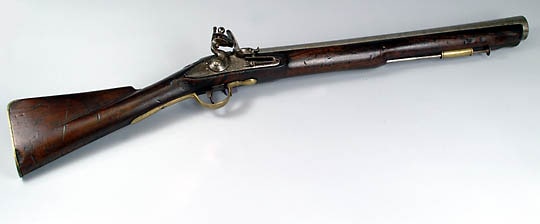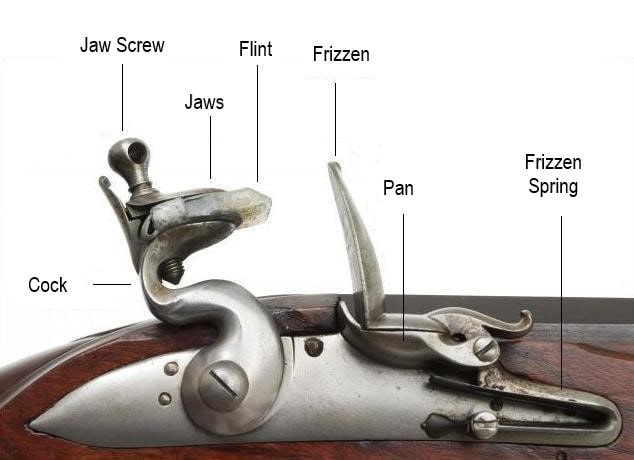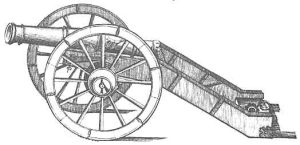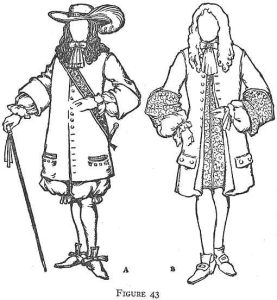Contents

Contents
The Blunderbuss Gun was a type of flintlock firearm used in close-quarters combat during the Revolutionary War.
This weapon was an older equivalent of the modern shotgun. It was very effective at short range, and could be easily maneuvered in small spaces, unlike a musket.
Its name comes from Dutch, and translates to “Thunder Box”, referring to the huge amount of sound it produces, and its effectiveness at close range.

Technical specifications
- Barrel length: 14-17″
- Caliber: typically loaded with 0.33 caliber buckshot
- Effective range: about 50 feet
- Weight: varied, 5-6 pounds was typical
- Firing mechanism: flintlock
- Materials: iron/steel, walnut or oak stock, brass fixtures
Design
The Blunderbuss came with a short barrel, typically around 15 inches long, and a flared muzzle. Sometimes the bore itself was also flared. Combined with the lead shot or nails it was loaded with, these characteristics gave the gun quite a large spread pattern.
The gun was very effective against infantry at short range, and could cause damage to multiple targets with a single shot. However, its projectiles did not have the velocity to be very effective at a distance of more than about 50 feet.
The Blunderbuss used a flintlock firing mechanism, like most guns of the time.
When the trigger is pulled, a flint strikes down on a frizzen (a striking surface), creating a spark and igniting the gunpowder. This would launch the lead shot down the barrel of the gun.
To load a Blunderbuss, you would first push gunpowder into the barrel, potentially in a small cartridge for faster reloading. Then, you would use a wad of paper or cloth to keep the powder in place, and then insert a cartridge of whatever projectile you wanted to shoot into the barrel.
A final wad might be used to keep the cartridge in position, and then everything is rammed into place to compact it, using a tool called a ramrod.
Reloading a Blunderbuss was much easier than reloading most other guns in use at the time, thanks to the flared shape of the barrel. On other types of weapons, it was often difficult to get the projectile (such as a musket ball) down the barrel. The Blunderbuss was designed to avoid this problem, so it could be used in close-quarters combat more effectively, where quick reloading is important.
A smaller type of Blunderbuss was also used, called a dragon. It functioned more like a modern-day handgun, except it also had a flared barrel, and was loaded with lead shot.
Usage
This type of gun was used by both British and American forces.
It was favored by those working in urban areas, or in other places where carrying a larger weapon would be unwieldy, such as on a boat, or when guarding a stagecoach. Calvalrymen also often carried a Blunderbuss.
The range of uses for this gun was quite limited.
Since its range was so poor, it could only do significant damage from very close range. Therefore, it was used primarily to injure or deter people, rather than to kill, in most cases.
However, the Blunderbuss was very good at its job, and was relatively popular during the Revolution. For stagecoach guards and cavalrymen in particular, it was a very useful weapon to have.




